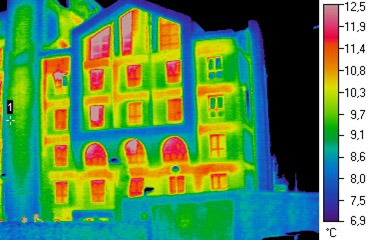The Challenge
Why Mid-Rise and High-Rise Apartment Buildings Waste Energy
There are several reasons why heating energy is wasted in multi-family residential buildings, including the following items that make it difficult to control space temperatures:

What you see
- When air is heated it rises. There are duct and pipe shafts, elevator shafts, and stair wells that allow air to move upward inside a building.
- As heated air rises in a building it creates a negative pressure that draws in even more outdoor air particularly at lower floors.
- Electric baseboard heaters are usually over-sized for the required heating load since they have fixed increments of capacity and must have equal or greater capacity than the required heat loss.
- The overcapacity problem becomes even worse when the outdoor air temperature is not sub-freezing, which is most of the heating season.
- Electric baseboards are normally fully ON or fully OFF. Their output does not match the heat loss.
- Some occupants adjust their thermostats up or down to suit how they feel.
- Some occupants are used to or prefer high thermostat settings.
- Interior walls and floors of apartment units are not insulated, so that an adjacent overheated space also overheats the surrounding spaces.
-

What you don't see
The usual reaction when one’s space is to warm is to open a window. Cool air enters if the window faces the wind, but air may only exit on the other exposures.
- Open windows on all but the lowest floors encourage even more heated air to rise in the building, drawing in even more outdoor air at the lower levels.
- Some of these reasons apply to buildings with gas heat also, even where each unit has its own furnace.